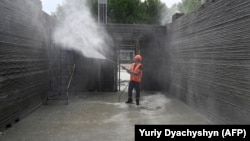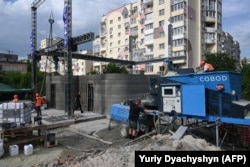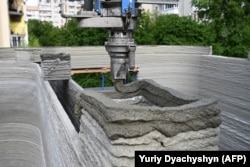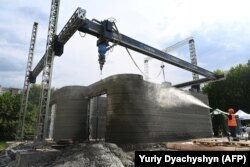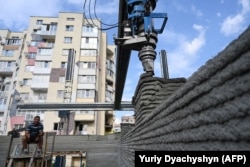Hypermodern construction technology is being used to build a school in Lviv that organizers hope will serve as a blueprint for the massive reconstruction work that lies ahead for Ukraine.
Layer by layer, Europe's first 3D-printed school is taking shape in a neighborhood of Lviv, in western Ukraine.
The project was organized by the humanitarian group Team4UA and uses equipment from COBOD International, a Danish 3D-printing construction company. A team of three people is needed to operate and monitor the printing robot.
The primary school is intended as a potential blueprint for erecting similar facilities across Ukraine. Kyiv says at least 277 schools have been destroyed by the Russian invasion, leaving thousands of Ukrainian children without classrooms.
Lviv is now home to 250,000 internally displaced people, more than 75,000 of whom are children. The school will be a hybrid of 3D-printed spaces and sections built by hand using wood and other materials.
In an interview with the BBC given in Lviv, Henrik Lund-Nielsen, the founder of COBOD, claimed 3D-printing technology is “much faster and much cheaper” than conventional construction methods. He later elaborated that “the first project people will do, they will typically not save, but once they get the hang of it they do it faster and faster and then they save money.”
Lund-Nielsen told the BBC that 99 percent of the concrete used in their mix for the Lviv school is sourced in Ukraine. Organizers of the project say a long-term goal is importing several printers and incorporating the rubble of destroyed buildings into the toothpaste-like concrete used for printing.
The 3D-printed section of the Lviv building is due to be completed by early June, while the school is scheduled to be fully completed by late 2023.




